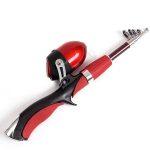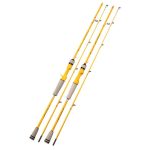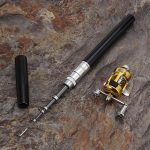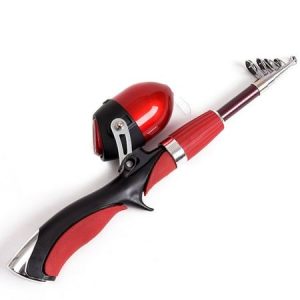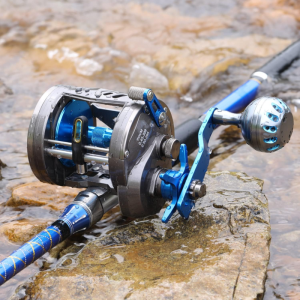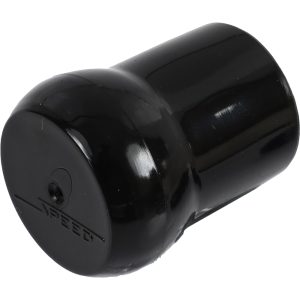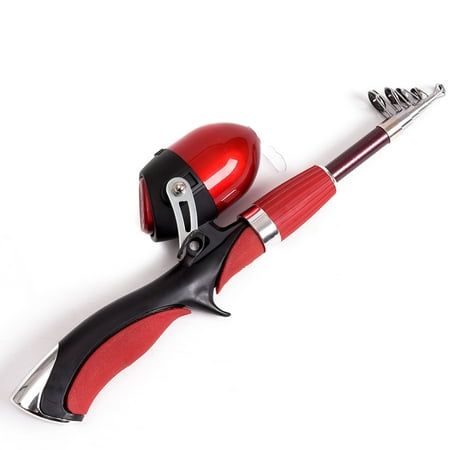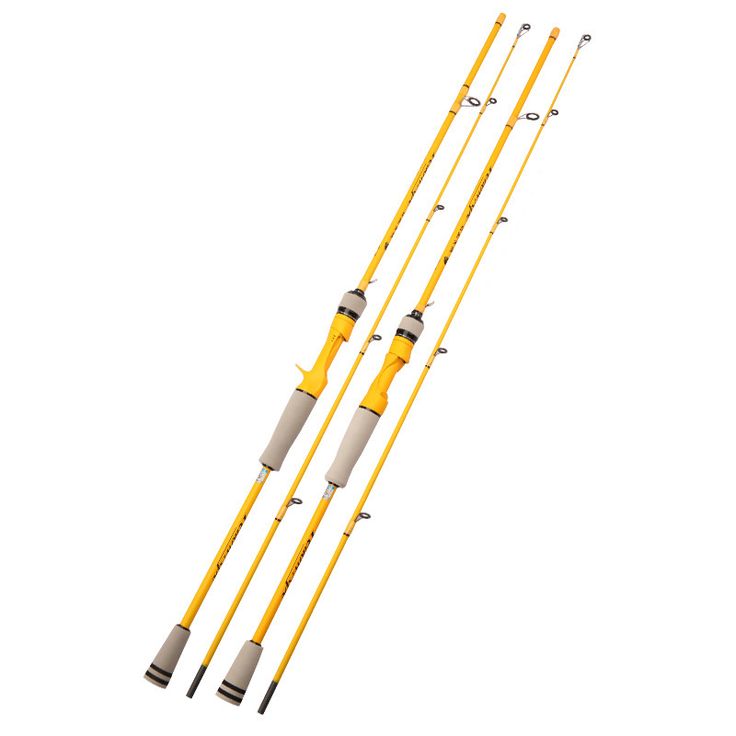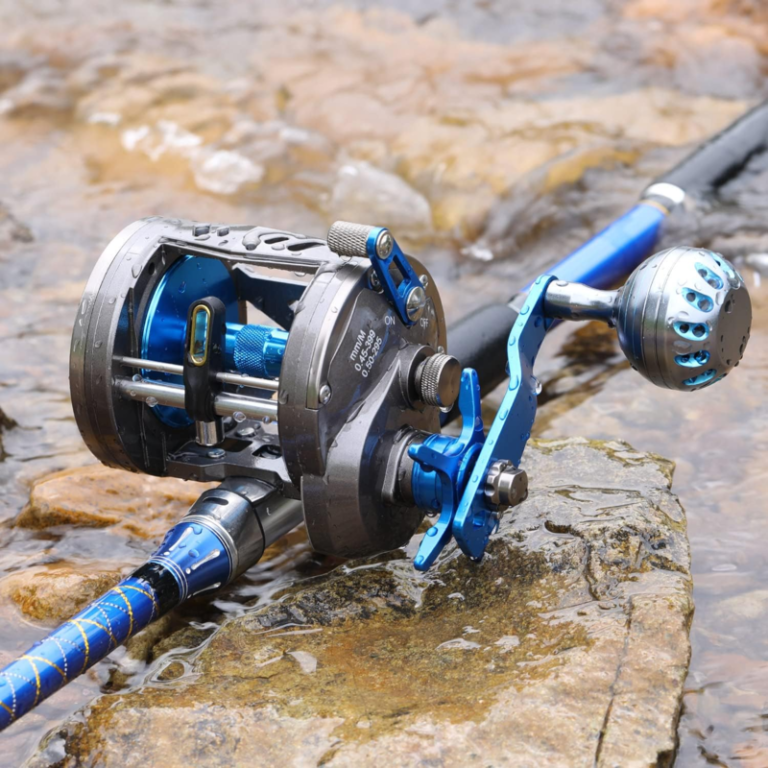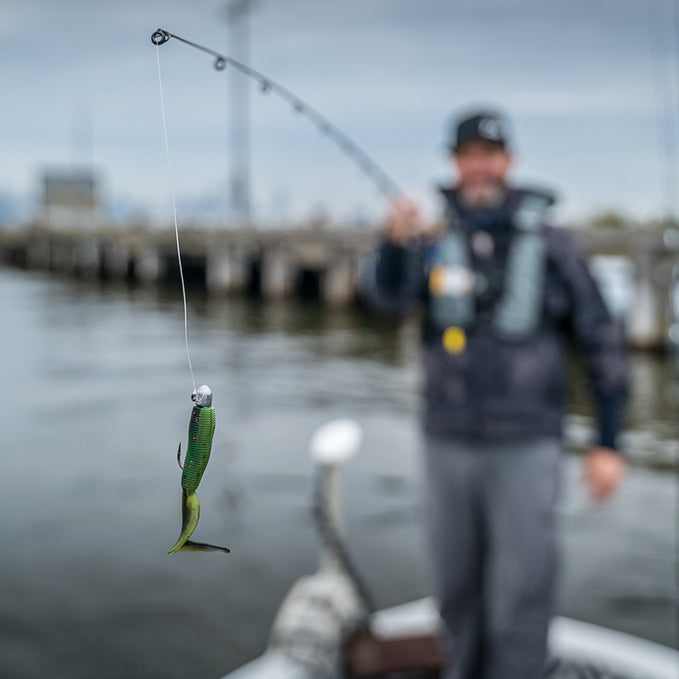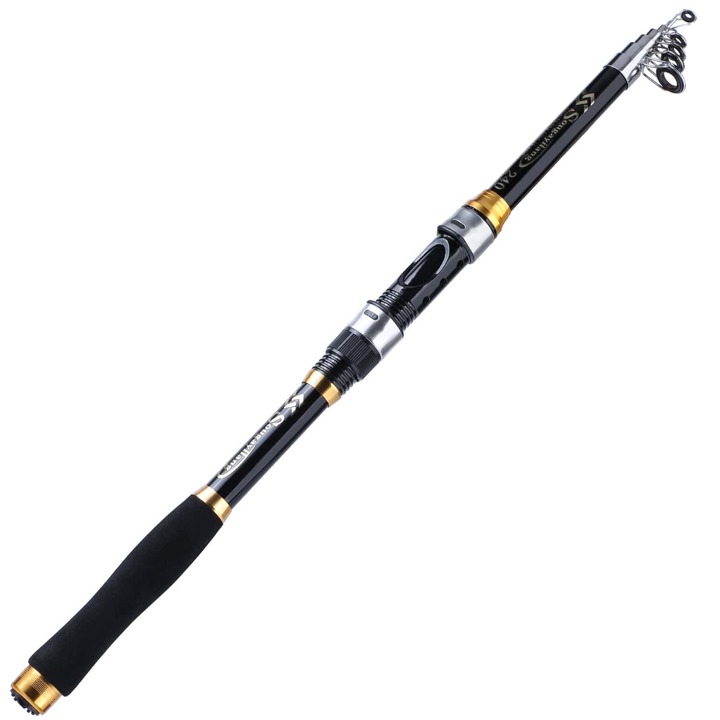Fishing is a rewarding and relaxing pastime, but it requires proper care and maintenance of equipment to ensure optimal performance. Among the essential accessories for any angler, fishing rod sleeves stand out as vital for protecting your gear. These sleeves offer protection against damage, tangles, and the elements, thereby prolonging the lifespan of your fishing rods. Consequently, understanding the importance of fishing rod sleeves can enhance your overall fishing experience. Therefore, this comprehensive guide explores the key features, benefits, and types of fishing rod sleeves, as well as tips for selecting the right one. By delving into these aspects, you can better protect and preserve your valuable fishing gear.
The Importance of Fishing Rod Sleeves
Fishing rod sleeves play a crucial role in keeping your rods safe and in excellent condition. Understanding their importance helps you make informed decisions about protecting your equipment. Therefore, exploring the significance of fishing rod sleeves is essential.

Preventing Physical Damage
Fishing rods are delicate and can easily be damaged during transportation or storage. Scratches, dents, and broken guides are common issues that can compromise the performance of your fishing rod. Rod sleeves act as a protective barrier, shielding your rods from physical damage. By preventing scratches and dents, rod sleeves help maintain the integrity and functionality of your rods. Therefore, understanding the importance of preventing physical damage is crucial for long-term gear maintenance.
Avoiding Tangles and Snags
One of the most frustrating aspects of transporting fishing rods is dealing with tangles and snags. Fishing rod sleeves keep your rods organized and prevent them from becoming entangled with other equipment. This not only saves time and effort but also reduces the risk of accidentally damaging your rods or other gear. By understanding how rod sleeves help avoid tangles and snags, you can ensure a more streamlined and hassle-free fishing experience. Therefore, recognizing the significance of organized transportation is essential.
Key Features of Fishing Rod Sleeves
Various features make fishing rod sleeves effective in protecting your gear. Understanding these features allows you to choose the right sleeve for your needs. Therefore, exploring the key features of fishing rod sleeves is crucial.
Material and Durability
The material and durability of a fishing rod sleeve are critical factors that determine its effectiveness. Common materials used for rod sleeves include neoprene, polyester, and mesh. Neoprene sleeves offer excellent protection and cushioning, while polyester and mesh sleeves are lightweight and breathable. Durability is essential, as a high-quality sleeve should withstand frequent use and harsh conditions. By understanding the importance of material and durability, you can ensure long-lasting protection for your fishing rods. Therefore, recognizing the value of robust materials is crucial.
Size and Fit
The size and fit of a fishing rod sleeve are important to ensure optimal protection. Rod sleeves come in various lengths and diameters to accommodate different types and sizes of fishing rods. A well-fitting sleeve should cover the entire length of the rod and fit snugly without being overly tight. Adjustable features, such as drawstrings or Velcro closures, can help achieve a secure fit. By understanding the significance of size and fit, you can choose a sleeve that provides comprehensive protection. Therefore, recognizing the importance of proper sizing is essential.
Types of Fishing Rod Sleeves
Different types of fishing rod sleeves cater to various needs and preferences. Understanding these types helps you select the most suitable sleeve for your specific requirements. Therefore, exploring the different types of fishing rod sleeves is essential.
Neoprene Rod Sleeves
Neoprene rod sleeves offer superior protection due to their thick, cushioned material. These sleeves are ideal for anglers who require maximum protection for their valuable rods. Neoprene sleeves are water-resistant, providing added protection against moisture and the elements. However, these sleeves can be bulkier and heavier compared to other materials. By understanding the benefits and drawbacks of neoprene rod sleeves, you can determine if they are the right choice for your needs. Therefore, recognizing the value of neoprene sleeves is crucial.

Mesh Rod Sleeves
Mesh rod sleeves are lightweight and breathable, making them a popular choice for anglers who prioritize ease of transport. These sleeves provide adequate protection against scratches and tangles while allowing air circulation to prevent moisture buildup. Mesh sleeves are less bulky and can be easily stored when not in use. However, they may offer less cushioning compared to neoprene sleeves. By understanding the advantages and limitations of mesh rod sleeves, you can choose a sleeve that suits your preferences. Therefore, recognizing the significance of lightweight materials is essential.
Polyester Rod Sleeves
Polyester rod sleeves strike a balance between protection and weight, offering a versatile option for anglers. These sleeves are durable, water-resistant, and provide decent cushioning for your rods. Polyester sleeves are available in various styles and colors, allowing for personalization and easy identification of your gear. By understanding the characteristics of polyester rod sleeves, you can choose a sleeve that meets your needs for both protection and convenience. Therefore, recognizing the value of versatile materials is crucial.
Choosing the Right Fishing Rod Sleeve
Choosing the right fishing rod sleeve involves considering factors such as material, size, and specific needs. Understanding these factors ensures you make an informed decision. Therefore, exploring tips for selecting the right sleeve is essential.
Assessing Your Needs
Before purchasing a fishing rod sleeve, assess your specific needs and preferences. Consider factors such as the type of fishing you do, the value of your rods, and the conditions in which you fish. For high-value rods or rigorous conditions, neoprene sleeves may be the best choice. For casual anglers or those who prioritize lightness, mesh sleeves might be more suitable. By understanding how to assess your needs, you can choose a sleeve that provides the appropriate level of protection and convenience. Therefore, recognizing the importance of personalized evaluation is crucial.
Checking Compatibility
Ensure the fishing rod sleeve you choose is compatible with your specific rod. Check the length and diameter of your rod and compare it with the sleeve’s specifications. Some sleeves are designed to fit specific types of rods, such as spinning or casting rods. Make sure the sleeve provides full coverage and a secure fit to prevent accidental slips. By understanding the significance of checking compatibility, you can select a sleeve that fits your rod perfectly. Therefore, recognizing the value of proper fitting is essential.
Budget Considerations
Budget is another important factor when selecting a fishing rod sleeve. While it’s essential to invest in a high-quality sleeve, there are options available for various price ranges. Determine your budget and look for sleeves that offer the best protection and durability within your price range. Sometimes, spending a bit more on a durable sleeve can save you money in the long run by preventing costly rod replacements. By understanding the importance of budget considerations, you can make a cost-effective choice. Therefore, recognizing the value of investing in quality is crucial.
Tips for Using and Maintaining Fishing Rod Sleeves
Proper use and maintenance of fishing rod sleeves ensure they remain effective in protecting your gear. Understanding these practices helps prolong the lifespan of both the sleeve and your rods. Therefore, exploring tips for using and maintaining fishing rod sleeves is essential.
Proper Usage Techniques
Using fishing rod sleeves correctly maximizes their protective benefits. Always slide the sleeve over the rod from the tip to the butt, ensuring it covers the entire length. Secure any adjustable features, such as drawstrings or Velcro closures, to keep the sleeve in place. When transporting multiple rods, keep individual sleeves on each rod to prevent tangles and damage. By understanding proper usage techniques, you can ensure maximum protection for your rods. Therefore, recognizing the importance of correct usage is crucial.
Regular Cleaning and Inspection
Regular cleaning and inspection of fishing rod sleeves help maintain their effectiveness. After each use, check the sleeve for dirt, debris, and moisture. Clean the sleeve with mild soap and water, and allow it to air dry completely before storing. Inspect the sleeve for any signs of wear or damage, such as tears or loose stitching, and address any issues promptly. By understanding the importance of regular cleaning and inspection, you can extend the lifespan of your fishing rod sleeves. Therefore, recognizing the value of ongoing maintenance is essential.
Addressing Common Questions About Fishing Rod Sleeves
Understanding common questions about fishing rod sleeves provides additional clarity and guidance. Knowing these answers ensures better preparation and confidence in selecting and using sleeves. Therefore, exploring common questions is essential.
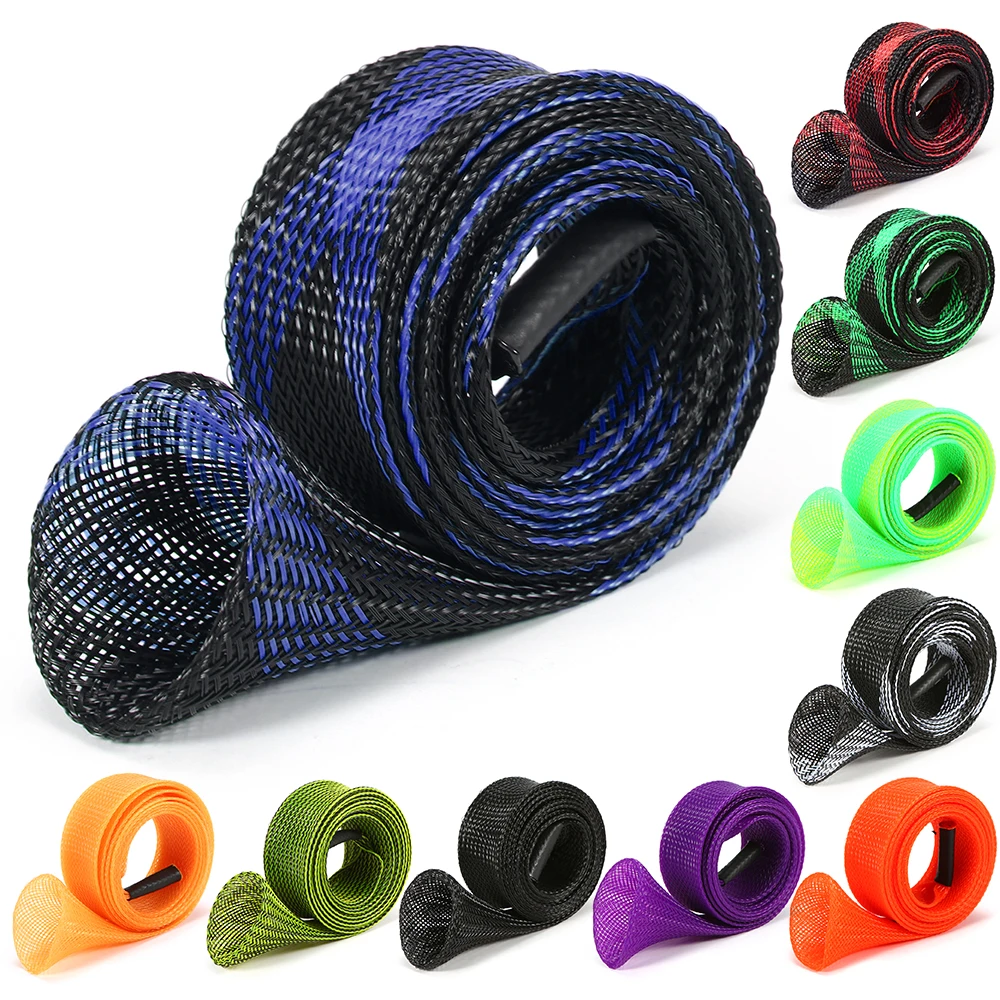
Can Fishing Rod Sleeves Be Used for All Types of Rods?
A common question is whether fishing rod sleeves can be used for all types of rods. While many sleeves are designed to be versatile, some are specifically tailored for certain types of rods, such as spinning or casting rods. Always check the compatibility of the sleeve with your specific rod type and ensure a secure fit. By understanding the versatility and limitations of rod sleeves, you can make an informed choice. Therefore, recognizing the importance of compatibility is crucial.
How Often Should Fishing Rod Sleeves Be Replaced?
Another common question concerns how often fishing rod sleeves should be replaced. The lifespan of a rod sleeve depends on factors such as material quality, frequency of use, and exposure to harsh conditions. Regularly inspect your sleeves for signs of wear and damage. If you notice significant wear, reduced protection, or fit issues, it’s time to replace the sleeve. By understanding the factors influencing sleeve longevity, you can ensure continuous protection for your rods. Therefore, recognizing the value of timely replacements is essential.
Addressing Common Misconceptions About Fishing Rod Sleeves
Addressing common misconceptions about fishing rod sleeves provides accurate information and dispels concerns. Clarifying misunderstandings ensures an informed perspective. Therefore, this section explores common misconceptions about fishing rod sleeves.
Misconception: All Rod Sleeves Are the Same
A common misconception is that all rod sleeves are the same. In reality, fishing rod sleeve vary significantly in material, design, and functionality. Each type of sleeve offers different levels of protection, durability, and convenience. By understanding the differences, you can choose a sleeve that best meets your specific needs. Therefore, dispelling this misconception highlights the importance of informed selection.
Misconception: Rod Sleeves Are Only for Transportation
Another misconception is that rod sleeves are only useful for transportation. While transporting rods securely is a primary function, rod sleeves also provide protection during storage. By preventing physical damage and tangles, rod sleeves help maintain your rods’ condition even when not in use. Understanding the additional benefits of rod sleeves ensures you make the most of this accessory. Therefore, dispelling this misconception emphasizes the versatility of rod sleeves.
Conclusion: Protecting Your Gear with Fishing Rod Sleeves
Protecting your gear with fishing rod sleeves involves understanding their importance, key features, types, and proper usage techniques. Proper knowledge of these aspects ensures optimal protection for your fishing rods.
Exploring key elements such as preventing physical damage, avoiding tangles, material and durability, and addressing common questions provides valuable insights. Recognizing the importance of proper fit, maintenance, and dispelling misconceptions enhances overall understanding and confidence.
By engaging with these elements, anglers can confidently use and maintain fishing rod sleeves, ensuring their gear remains in excellent condition. Therefore, whether you are a novice or an experienced angler, understanding how to protect your fishing rods offers practical and valuable insights. Embrace the opportunity to preserve your equipment, knowing you have the knowledge and resources to achieve optimal protection!
